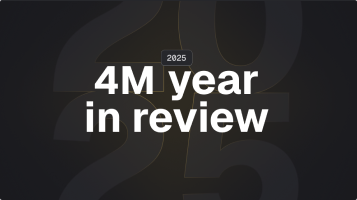The Future of E&C in America
Written by

Published on
July 2, 2021


Table of contents
Anyone looking to invest or participate in any way in the Engineering and Construction markets in the US has been following the news closely. Keeping your ear to the ground seemed like the only way to catch up with recent changes in these sectors.
Clearly, 2020 was one of the most tumultuous years in modern U.S. history. As uncertainty and fear spread around the world, many Americans had to uproot their lives almost overnight.
As people isolated and safety precautions took hold, some business all but froze while dining, hospitality and traditional entertainment venues went completely dark.
The engineering and construction market reflected this turbulent year with significant declines in some sectors and notable increases in others. As 2021 brings continued uncertainty to the markets, analysts predict that recovery is on the horizon in 2022.
The base assumptions are good though. FMI Corp.’s 2021 Engineering and Construction Industry Outlook projects that final figures will show total E&C spending shrunk by just 1% in 2020 compared to 2019.
That is not much. However, this number is grossly misleading.
The total spending in some nonresidential sectors sunk as low as 17% in 2020 compared to 2019, while residential construction increased in overall spending up to 8% for single-family units and 10% on home improvements. Public safety and water supply infrastructure also raised the market with increased spending of 13% and 11% respectively.
The effects of the global pandemic are yet to be seen.
It's restrictions and challenges continue to shape the economical environment of the E&C industry moving deeper into 2021. With COVID-19 vaccines on the rise across America and a new administration in Washington, economists are projecting an uneven recovery track with continued slumps in 2021 before a more positive 2022. One interesting indicator of the road ahead is the 2021 Dodge Construction Outlook. Data is suggesting that construction starts, previously plunging 14% to $738 billion in 2020, will gain a more than 4% to $771 billion in 2021, still well below pre-pandemic figures. Another indicator is found with the American Institute of Architects Consensus Construction Forecast, which compiles data from the nation’s leading AEC market forecasters, also anticipating a 6% decline in overall E&C spending in 2021 before growth returns in 2022.
Despite all that, the story still has another side to it as is evident in other sectors that have flourished this past year, because of the pandemic. According to the U.S. Department of Commerce the total amount of e-commerce sales rocketed by 32.4% to about $792 billion in 2020, subsequently driving the need for additional storage and distribution spaces nationwide.
In another report by FMI, it is stated that warehouse construction grew from approximately one-quarter of put-in-place commercial construction in 2015 to nearly half in 2020, translating to almost 18% growth year over year. Another sector that thrived during the past year was water supply. FMI’s report shows that a $1.4 trillion omnibus package under the 2020 Water Resources Development Act drove water supply spending up 11% in 2020 over 2019, a spending surge that is expected to level off by the end of 2021.
To understand these seemingly random and erratic peaks and valleys, we must consider how actual events effected the market, and why. PSMJ resources inc. released a forecast report demonstrating how the market’s movement the past year has in fact coincided with the pandemic. Their report shows that when COVID-19 cases began spiking during the Q2 of 2020, the NPMI tanked to a “near-record-worst” of -22% before rebounding to 10% in Q3 as COVID-19 cases leveled. The index then fell again to 5% as cases re-surged in Q4.

Of the 12 major markets that PSMJ studies, energy/utilities led with an NPMI of 47%, up from 28% in the Q3 2020 and even higher than the pre-pandemic rating of 43% in Q4 of 2019. “Its surge is attributable to a huge bounce in the renewable energy submarket, which reported an NPMI of 75% in the fourth quarter,” the report says. “Utility distribution (59%) and telecom/cables (39%) were also strong.”
Another key factor, although more political in nature, is the impact of government and federal spending. Under President Joe Biden, it is predicted that renewable energy and infrastructure spending would continue to expand. President Biden also indicated that behind the $1.9 trillion COVID-19 relief package signed into law in March, one of his top priorities is an infrastructure revitalization plan, with special consideration of renewable energy.
As other countries also start to emerge from their own 'year of the COVID', we can only guess how many will follow the American example and invest in their infrastructure as means to boost the dwindling economy and local markets. What we know for sure is that like anything else in America, when they go about doing something they go big, and rejuvenating the E&C sectors is not different.
Data source: ASCE.org
Recent blog posts

Our Newsletter
Join 7k infrastructure professionals
Get monthly insights on ways to build smarter, faster and safer with Utility AI.

.avif)




